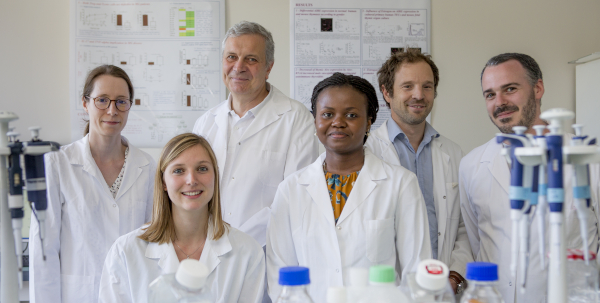
Sporadic inclusion myositis combines inflammatory processes and muscle degeneration. It is the most common myositis after the age of 50, but also the only one that is unresponsive to the usual treatments for these autoimmune diseases (corticosteroids, immunosuppressants). Between 2015 and 2017, Prof. Olivier Benveniste’s team led, with the financial support of AFM-Téléthon, a single-center, randomized, double-blind phase II / III clinical trial called Rapami. Its objective was to evaluate in 44 participants aged 45 to 80 years, the efficacy, safety and tolerance of sirolimus or rapamycin (Rapamune®) at a dose of 2 mg / day, versus placebo, for one year.
This molecule, indicated in the prevention of rejection after renal transplant, has a selective immunosuppressive action. It blocks the proliferation of effector T lymphocytes (while preserving regulatory T) and induces autophagy, all of these processes altered in inclusion myositis.
A trend towards stabilization
After providing preliminary data at the end of 2017, the investigators published in January 2021 in The Lancet Rheumatology the final results of the Rapami trial, which objectify after one year of treatment:
- significant differences for the evolution of the results of the 6-minute walk test, vital capacity, the fat fraction in the thighs (MRI) and the HAQ-DI score (Health Assessment Questionnaire without Disability Index), with a trend towards stabilization under sirolimus versus deterioration under placebo;
- a decline under sirolimus of subpopulations of CD8 + and CD38 + effector T cells, correlated with the positive effects on the results of the 6-minute walk test;
- similar results in the sirolimus and placebo groups for the maximum voluntary isometric knee extension force (primary endpoint of the trial) as well as for the strength of the other muscle groups evaluated (elbow flexion and extension, knee flexion, grasping ), dysphagia, IBMWCI and IBMFRS scores;
- the occurrence of serious side effects in 45% of patients on sirolimus versus 27% of those on placebo;
- discontinuation of treatment for 18% of participants in the sirolimus group (n = 4) due to side effects (severe mouth ulcers, aseptic pneumonia, renal failure, edema of the lower limbs).
To be confirmed in a multicentre study
For the investigators, the benefits of sirolimus on the 6-minute walk test could be explained by more respiratory and metabolic effects than muscular. They are sufficient to justify the launch of a large phase III trial, which is expected to last two years and include 200 participants in the United Kingdom, Australia, the Netherlands and the United States.
